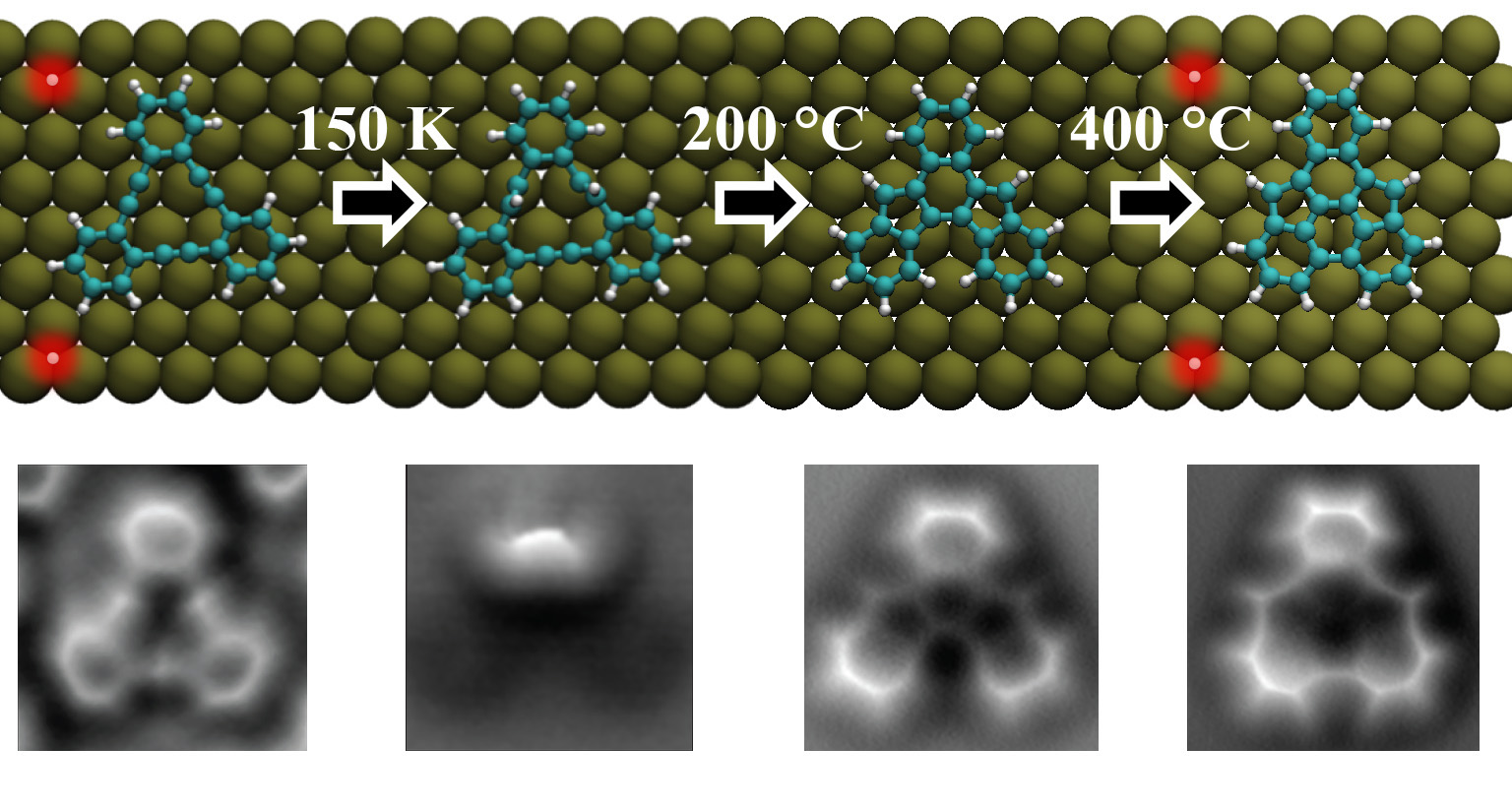銅表面上の炭化水素分子の逐次表面上変換の熱的制御
Thermal control of sequential on-surface transformation of a hydrocarbon molecule on a copper surface
2016年9月13日 Nature Communications 7 : 12711 doi: 10.1038/ncomms12711

表面での化学反応を用いて、ひとつの段階で炭素原子を結合して表面上に直接ナノスケールの構造物を作製できる。より複雑で機能化された構造を作製するには、より高度な化学反応の制御法を開発する必要性がある。本研究では、Cu(111)表面上の炭化水素分子を用いて熱的に制御された逐次三段階化学変換を示す。高分解能の原子間力顕微鏡と第一原理計算を組み合せて、設計された前駆体分子から二個の中間体化合物を経由した化合物生成の変換過程を詳細に研究した。その結果、表面を触媒とした化学反応を用いることにより、溶液化学では容易に合成できない化合物を生成できることが実証された。
Corresponding Authors
On-surface chemical reactions hold the potential for manufacturing nanoscale structures directly onto surfaces by linking carbon atoms in a single-step reaction. To fabricate more complex and functionalized structures, the control of the on-surface chemical reactions must be developed significantly. Here, we present a thermally controlled sequential three-step chemical transformation of a hydrocarbon molecule on a Cu(111) surface. With a combination of high-resolution atomic force microscopy and first-principles computations, we investigate the transformation process in step-by-step detail from the initial structure to the final product via two intermediate states. The results demonstrate that surfaces can be used as catalysing templates to obtain compounds, which cannot easily be synthesized by solution chemistry.

